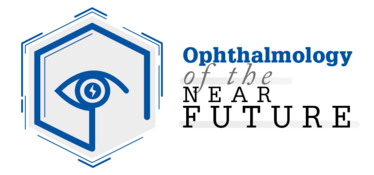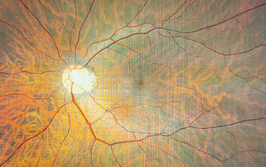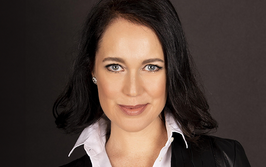
Test Driving Vision
The Light Adjustable Lens: giving clinicians the power to customize refractive outcomes post-implantation
| 3 min read
sponsored by RxSight
Despite numerous advances in modern cataract surgery technologies in the recent years, only six out of 10 cataract patients achieve their targeted vision and an even smaller percentage achieve excellent vision at all distances (1). Ahead of cataract surgery, it can be difficult to predict how the eye will heal after the procedure and therefore accurately calculate the lens power. Surgeons are acutely aware of the dangers of overpromising great outcomes to cataract patients, and patient satisfaction can be based on very subjective criteria.
With that in mind, how often have you wished that you were able to change the intraocular lens parameters after implantation, according to the patient’s individual needs, and without having to exchange the lens or use LASIK enhancements? The Light Adjustable Lens (LAL) from RxSight – the only IOL that can be adjusted after surgery – realizes this dream. LAL patients can trial vision and modify settings up to three times during the adjustment phase, making it a truly customizable solution. It’s a “vision test drive” that enables patients to experience their lens settings in real-world scenarios and choose vision properties that work best for them. Clinicians now have the ability to customize and accurately titrate the refractive power to an individual target for each patient.
How does it work?
The LAL is made of a special photosensitive material that changes the shape and power of the lens in response to ultraviolet (UV) light. The lens incorporates proprietary silicone photoreactive additives – macromers – that are distributed throughout it. When light is directed to a specific area of the lens, macromers in the path of the light attach to the ends of other additives, forming polymers. The remaining unreacted macromers physically diffuse into the exposed area, causing a highly predictable change in the shape and refractive power of the lens.
Steven Silverstein, of Silverstein Eye Centers in Kansas City, Missouri, USA, has this to say about the LAL and the Light Delivery Device (LDD), also available from RxSight: “Every decade or so, a technology emerges that shifts the balance of our clinic or surgical paradigm and provides the next level of scientific achievement. I have been following the progress of the LAL technology as it moved through the different phases
of the clinical trials; the data is frankly remarkable. There was no question that this new lens and its associated light delivery system (LDD) is the most important advance since premium lens implants hit the market 25 years ago. It is the IOL I will have in my eyes, and we recommend it for every appropriate candidate in our practice.”
In a recent post-market study, which reported on 143 patients at 21 clinical practices, 85 percent of patients saw 20/20 or better at distance, and 75 percent were J1 or better. 97 percent saw 20/25 or better and 89 percent were J2 or better (2). These outcomes at distance and near are thanks to the accuracy and precision of the LAL (in the same study, 93.5 percent of eyes were within 0.5 D of target). As the LAL is a monofocal IOL, clinical studies have not shown an increase in dysphtopias that are commonly reported with multifocal IOLs (3).
Mark Vital, corneal surgeon at Houston Eye Associates in Houston, Texas, USA, shares his experience with the LAL: “Being a non-refractive cornea doctor, I tend to be very skeptical and conservative about new technology for refractive solutions. The LAL has delivered such incredible results, I might not be able to call myself a non-refractive cornea doctor anymore! Correcting the non-biological element of surgery (the IOL) is inherently more accurate and precise than being subject to the unpredictable results of patient healing.”
If you are ready to enter into a whole new partnership with your patients, helping them “test drive” their vision to obtain more satisfaction and better visual outcomes, introducing the LAL with the Light Delivery Device to your practice is the way forward.
The LAL is currently approved and marketed in the US. The company will announce plans to expand soon.

- Market Scope 2020 IOL Market Report: A Global Analysis for 2019 to 2025.
- RxSight PMCS-002. Clinical Outcomes of Patients Bilaterally Implanted with LAL.
- RxSight P160055: Data on File.













